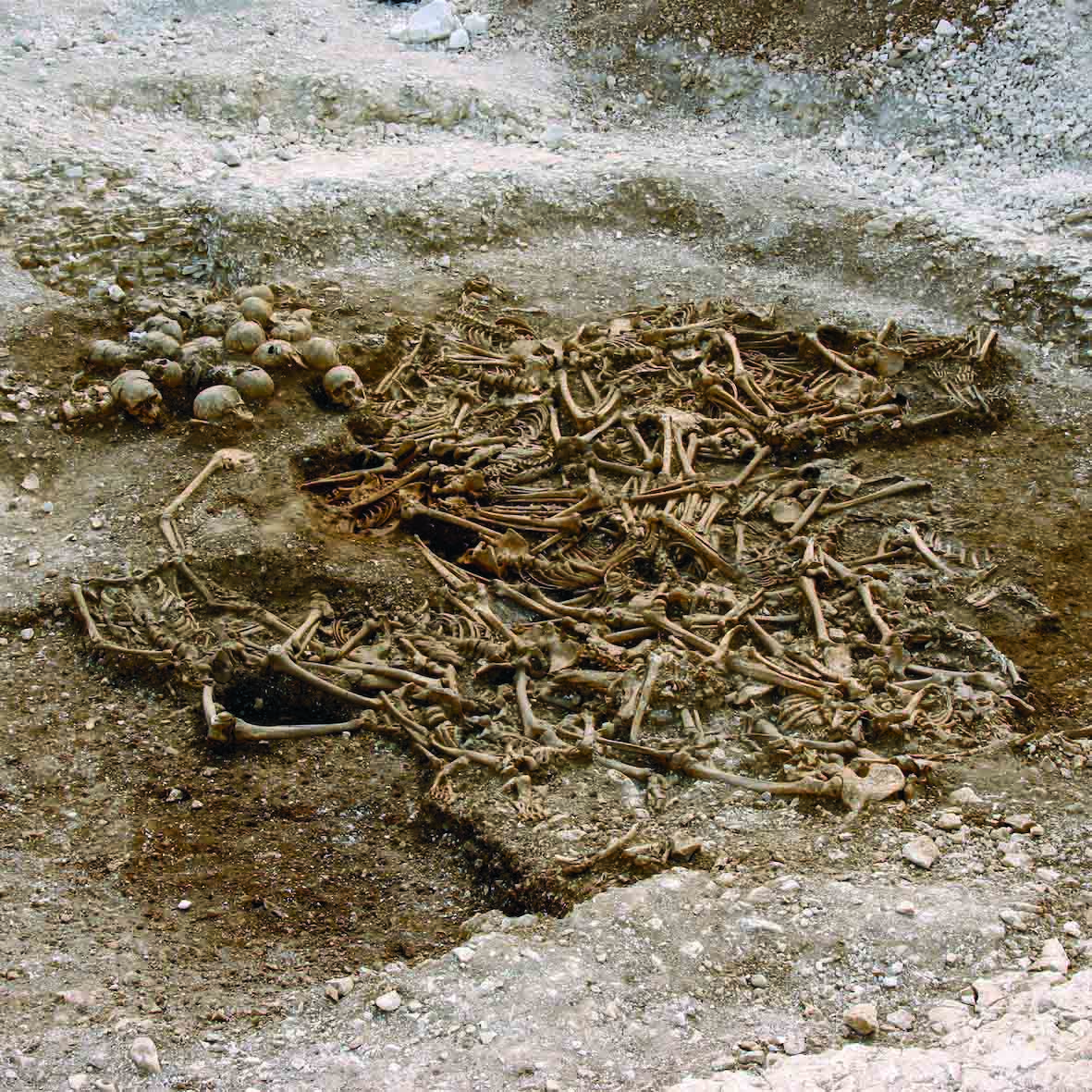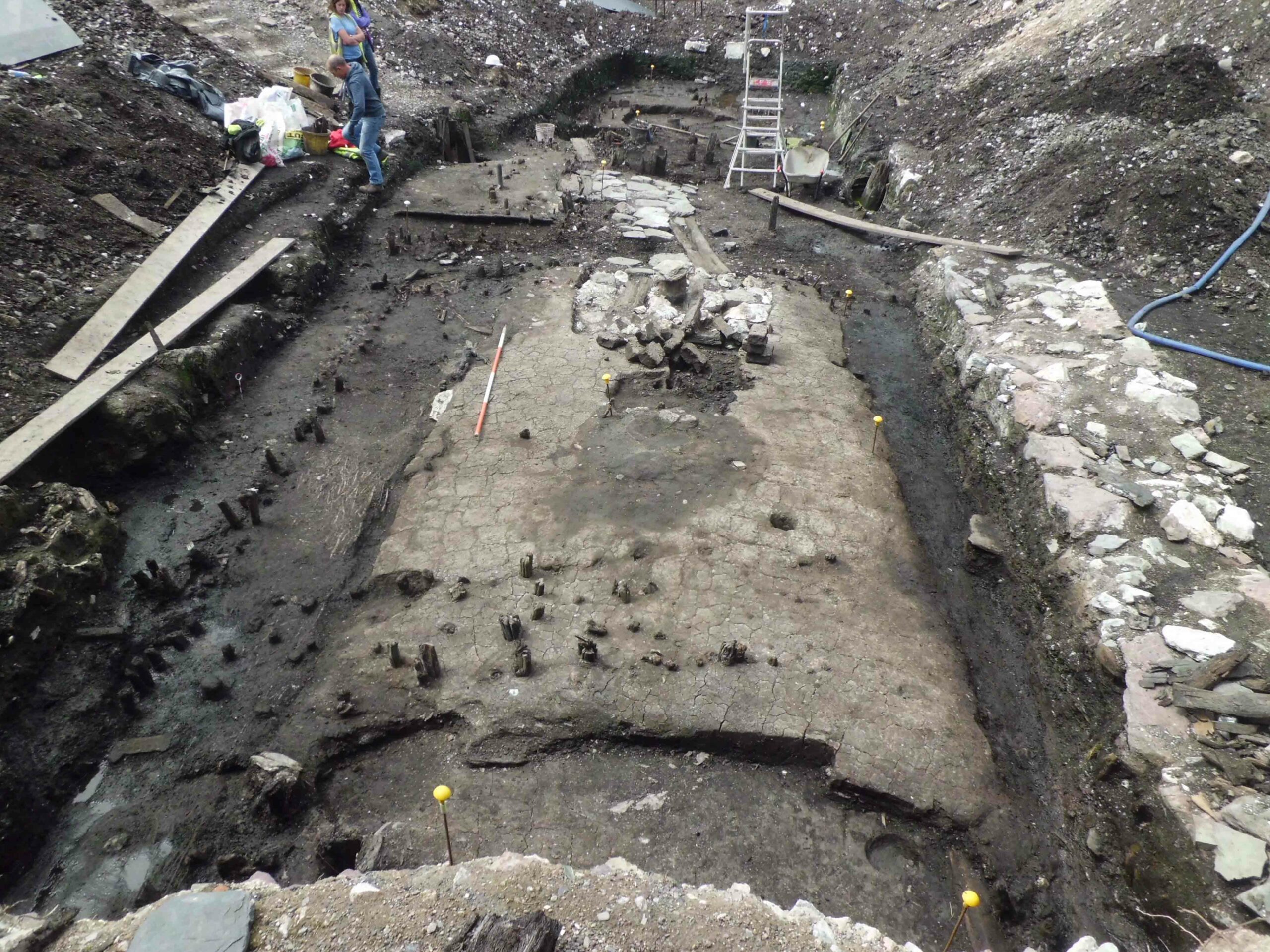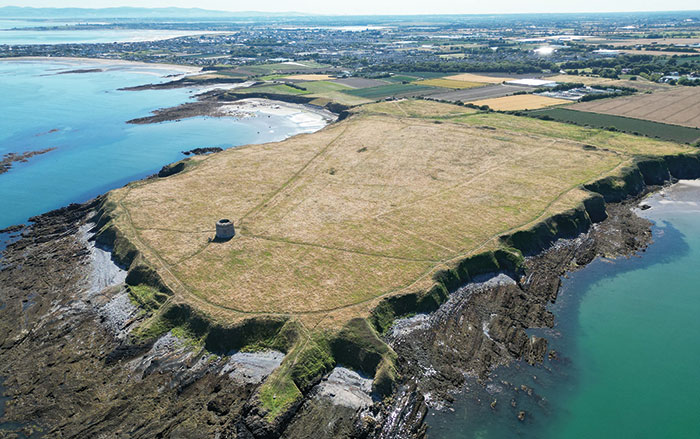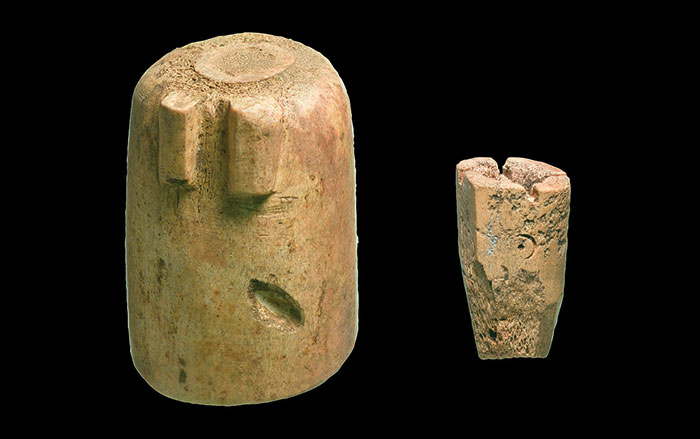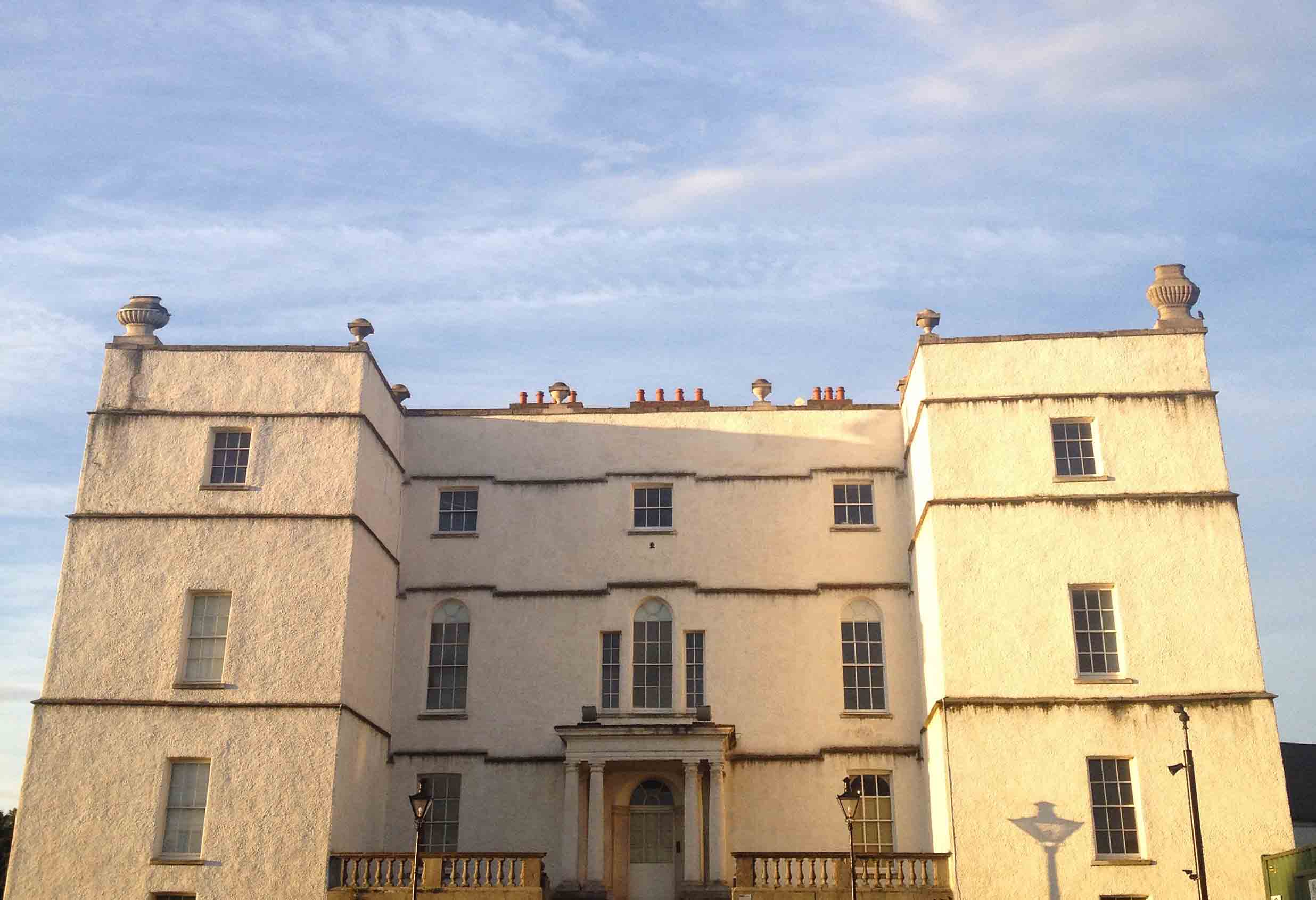
When Irish archaeologists working under Dublin’s South Great George’s Street just over a decade ago excavated the remains of four young men buried with fragments of Viking shields, daggers, and personal ornaments, the discovery appeared to be simply more evidence of the Viking presence in Ireland. At least 77 Viking burials have been discovered across Dublin since the late 1700s, some accidentally by ditch diggers, others by archaeologists working on building sites. All have been dated to the ninth or tenth centuries on the basis of artifacts that accompanied them, and the South Great George’s Street burials seemed to be four more examples.
Yet when excavation leader Linzi Simpson of Dublin’s Trinity College sent the remains for carbon dating to determine their age, the results were “quite surprising,” she says. The tests, performed at Beta Analytic in Miami, Florida, and at Queen’s University in Belfast, showed that the men had been buried in Irish soil years, or even decades, before the accepted date for the establishment of the first year-round Viking settlement in Dublin—and perhaps even before the first known Viking raid on the island took place.
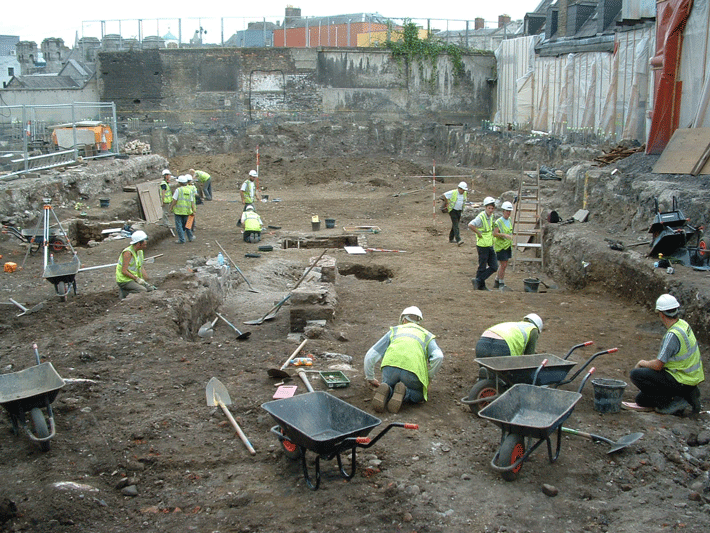
Simpson’s findings are now adding new weight to an idea gaining growing acceptance—that, instead of a sudden, cataclysmic invasion, the arrival of the Vikings in Ireland and Britain began, rather, with small-scale settlements and trade links that connected Ireland with northern European commerce for the first time. And, further, that those trading contacts may have occurred generations before the violent raids described in contemporary texts, works written by monks in isolated monasteries—often the only places where literate people lived—which were especially targeted by Viking raiders for their food and treasures. Scholars are continuing to examine these texts, but are also considering the limitations of using them to understand the historical record. The monks were devastated by the attacks on their homes and institutions, and other contemporaneous events may not have been recorded because there was no one literate available to do so. “Most researchers accept now that the raids were not the first contact, as the old texts suggest,” says Gareth Williams, curator of medieval coinage and a Viking expert at the British Museum. “How did the Vikings know where all those monasteries were? It’s because there was already contact. They were already trading before those raids happened.”

The beginning of the Viking era in Britain was long thought to have been June 8, A.D. 793, the day when seaborne Scandinavian raiders appeared on the horizon and attacked a monastery on the island of Lindisfarne, off the east coast of England. Population pressures at home, a thirst for wealth and adventure, and improvements in boat-building techniques all propelled the Vikings out of their chilly realm in search of conquest. In 795 they reached Ireland with an attack on Rathlin Island, where the monastery was “burned by the heathens,” according to the Annals of Ulster, the longest and most detailed of the medieval texts that historians have relied on to chronicle the period. At the time, Ireland had been Christian for at least three centuries, and its monasteries were its wealthiest and most powerful institutions. Early medieval texts refer to the Vikings as simply “the heathens,” stressing the religious, rather than ethnic, differences between them and the Irish.
The Annals describe hordes of Vikings plundering the landscape and battling the feuding warlords who ruled Ireland. One entry, from 798, says the pagan invaders stole cattle tribute from chieftains, burned their churches, and “made great incursions in Ireland and also Alba [Scotland],” painting a picture of widespread chaos and destruction. Another entry records the arrival of a flotilla of 60 Viking ships in 837 at the mouth of the Boyne River, 30 miles north of Dublin. Within weeks, the Annals say, the Vikings had won a battle “in which an uncounted number [of people] were slaughtered.” Recent excavations in Ireland tend to confirm the account the texts depict. “They came, they saw the lay of the land, and then came the catastrophic invasions described in the Annals,” Simpson says. “Considering the weapons buried with these guys, and all the Viking cemeteries discovered in Dublin, I don’t think the Annals were exaggerating. It must have been a very violent time.”
By 841, Vikings had established a year-round settlement around a timber-and-earthen fort known as a longphort at the confluence of the Liffey and Poddle Rivers, in the heart of modern Dublin. This date has long been taken to be the beginning of the Vikings’ permanent settlement in Ireland. Through alliances, conquest, and intermarriage with local kings, their power waxed and waned over the next two centuries until they were expelled by celebrated Irish warlord Brian Boru in the Battle of Clontarf in 1014. In recent years the story of that battle has also been revised, with modern scholars seeing it more as a clash for control of Dublin’s port than the shining moment of Irish nationalism of lore. Nonetheless, it meant the end of the Vikings’ presence. Unlike in England and northern France, where they created new cultural orders and royal lineages, the Vikings left little permanent imprint on Ireland, and there are few Viking place names there or Norse words in its language.

Since the 1960s, archaeologists have been gathering information about the mid-ninth-century longphort that lay under the pubs and sidewalks of Fishamble Street in Dublin. “The Vikings started with sporadic summer raids, but after some years they decided, ‘This is lucrative, let’s stay,’ and so they built settlements to stay over the winter,” says Ruth Johnson, Dublin’s city archaeologist. Although the earlier dates for a Viking presence in Dublin that have been identified by Simpson and independent archaeologist Edmond O’Donovan differ from the later, established dates by only a few decades, when combined with other evidence, they are challenging the chronology of Viking settlement in Ireland.
Carbon dating, which measures the age of organic materials based on the amount of radioactive carbon 14 remaining in a specimen, usually gives a range of likely dates at the time of death. The older the material, the wider the range. In the case of the four individuals excavated under Dublin’s South Great George’s Street, Simpson found that two of them had a 95 percent probability of having died between 670 and 880, with a 68 percent probability of between 690 and 790. Thus, the entire most likely range was before the first documented arrival of Vikings in 795. A third individual lived slightly later, with a 95 percent probability of having died between 689 and 882, with a 68 percent probability of between 771 and 851. “I expected a later range of dates, safe to say,” says Simpson. “These dates seem impossibly early and difficult to reconcile with the available historical and archaeological sources.”

The fourth Viking excavated at South Great George’s Street was the most intact of the group and revealed the most about their lives and hardships. A powerfully built man in his late teens or early 20s, he stood five foot seven—tall by the day’s standards—with the muscular torso and arms that would come from hard, oceangoing rowing. His bones showed stresses associated with heavy lifting beginning in childhood. Unlike the three other men, he was not buried with weapons. He and one of the other men shared a congenital deformity in the lower spine, perhaps indicating they were relatives. Carbon dating gave a wider range for his lifetime, showing a 95 percent probability that he died between 786 and 955.
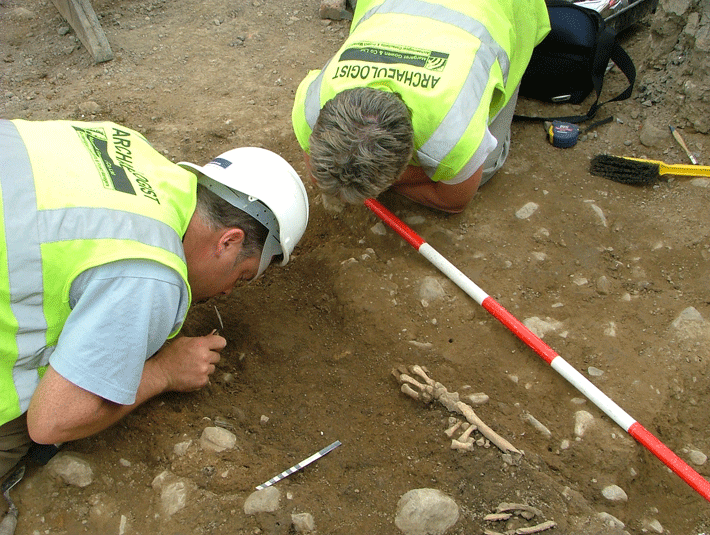
In 2005, O’Donovan found two Viking burials under Dublin’s Golden Lane of similar ages to Simpson’s, with a 94 percent probability of death between 678 and 870 for both individuals. One of the burials was an elderly woman, suggesting that Viking family groups, a telltale sign of permanent settlement, were likely established in Dublin earlier than medieval texts had indicated, and perhaps even before the establishment of the longphort. In a separate excavation under Ship Street Great, a few blocks away, Simpson found a Viking corpse with a 68 percent chance of dating from 680 to 775—again, before historical sources say Vikings had even set foot in Ireland. “We know that Vikings started staying over the winter in 841. But now these findings are showing dates before that, and people are starting to wonder what’s going on,” explains Johnson. “They weren’t supposed to be here yet.”
Tests done at the University of Bradford in England on the four South Great George’s Street men’s isotopic oxygen levels, which indicate where an individual spent childhood based on a chemical signature left by groundwater in developing teeth, told yet another story. The results showed that the two men with the spinal deformity had spent their childhood in Scandinavia, though the tests were not precise enough to show where exactly. However, the other two had spent their childhoods far from the Viking homeland, in Ireland or Scotland, another sign of permanent settlement by families, and not just summertime raids by Viking warriors. “You’ve got these four guys, with a mixed geographic origin, and closely associated with fixed settlements, with fires and postholes,” says Simpson. “They didn’t just come here and die and get buried. They were amongst the living.”
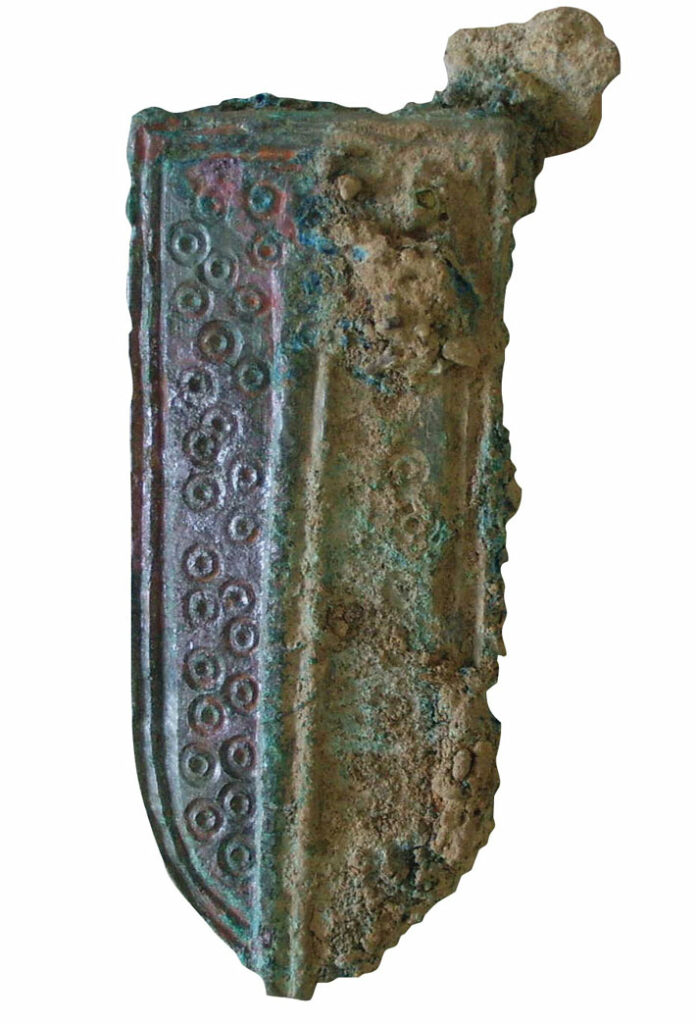
The evidence of an earlier-than-expected Viking presence in Ireland, based as it is on forensic tests conducted on a handful of burials, may seem slight. But seemingly small pieces of evidence can overturn well-established conventions in archaeology. Both Simpson and Johnson stress that more excavations and tests will be needed before anyone can rewrite the history of Viking settlement, and that is years away. Archaeological work in Ireland has been starved of funds and nearly stopped completely after the country’s economic crash of 2008, and it is only now reviving. Williams adds, “There are two possibilities raised by [Simpson’s] work. Either there was Viking activity earlier than we’ve realized in Ireland, or there is something in the water or soil in Dublin skewing the data, and both possibilities need further research.”
Nevertheless Williams agrees with Simpson and others that the chronology of the Viking presence in Britain and Ireland is in flux, and that they were likely trading or raiding in Britain, and perhaps Ireland as well, before 793. “Most archaeologists would accept that there was extended contact in Britain with the Vikings from the late eighth century or earlier, and there is no reason to think that contact would not extend around Scotland and down into Ireland, especially in a natural landing place like Dublin,” says Williams. Other finds support this: For example, the discovery at the port of Ribe, Denmark, of Anglo-Saxon artifacts dated to the eighth century and recent carbon dating of Viking remains in the Orkney Islands of northern Scotland from the same period all suggest fluid trade before raids began, he explains. “It’s a poorly documented part of history,” he says. “But before there was Viking settlement, there was this big trading zone in the North Sea. Did it extend to the Irish Sea? We don’t have any evidence to say that, but it could be just a question of time.”



